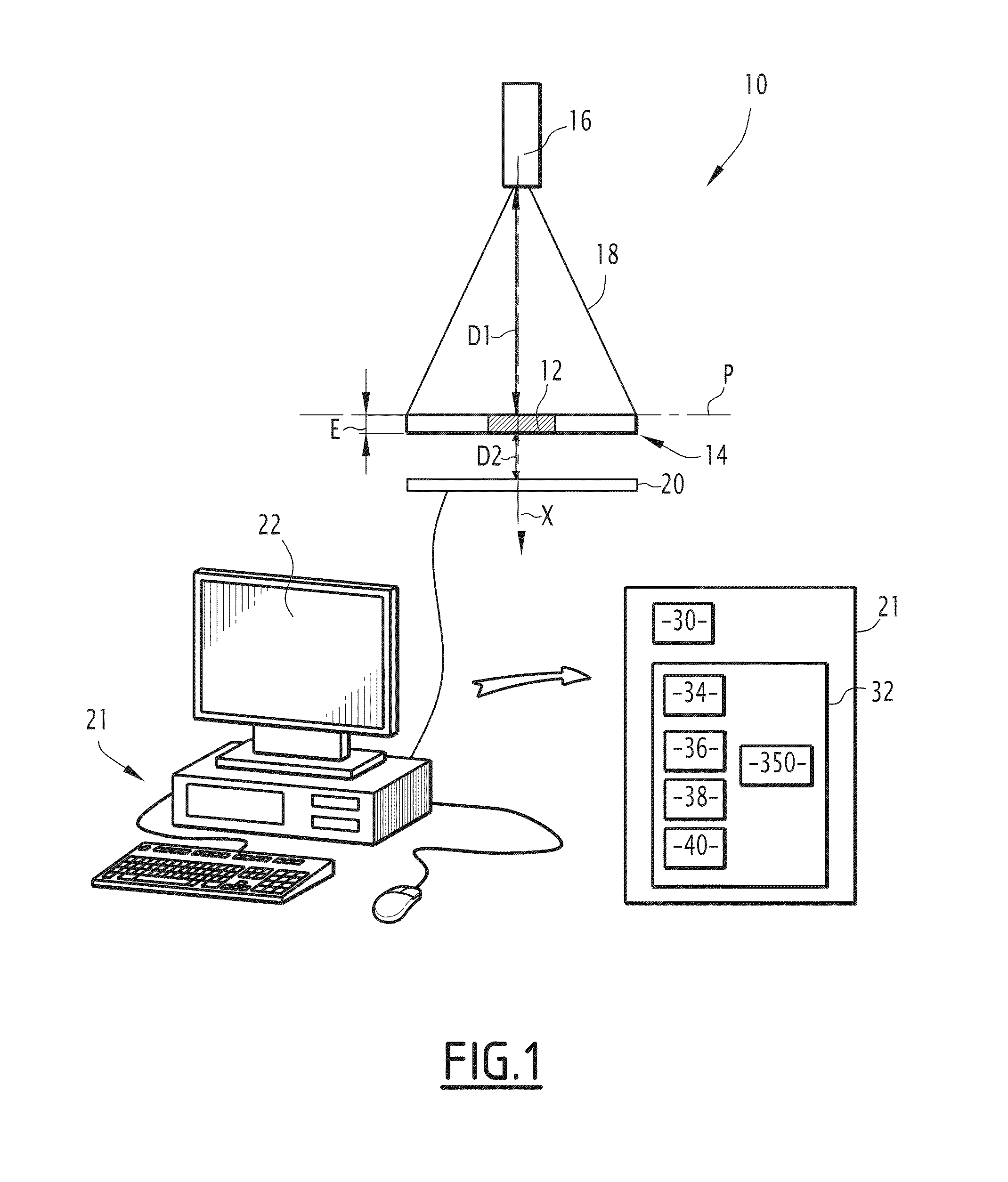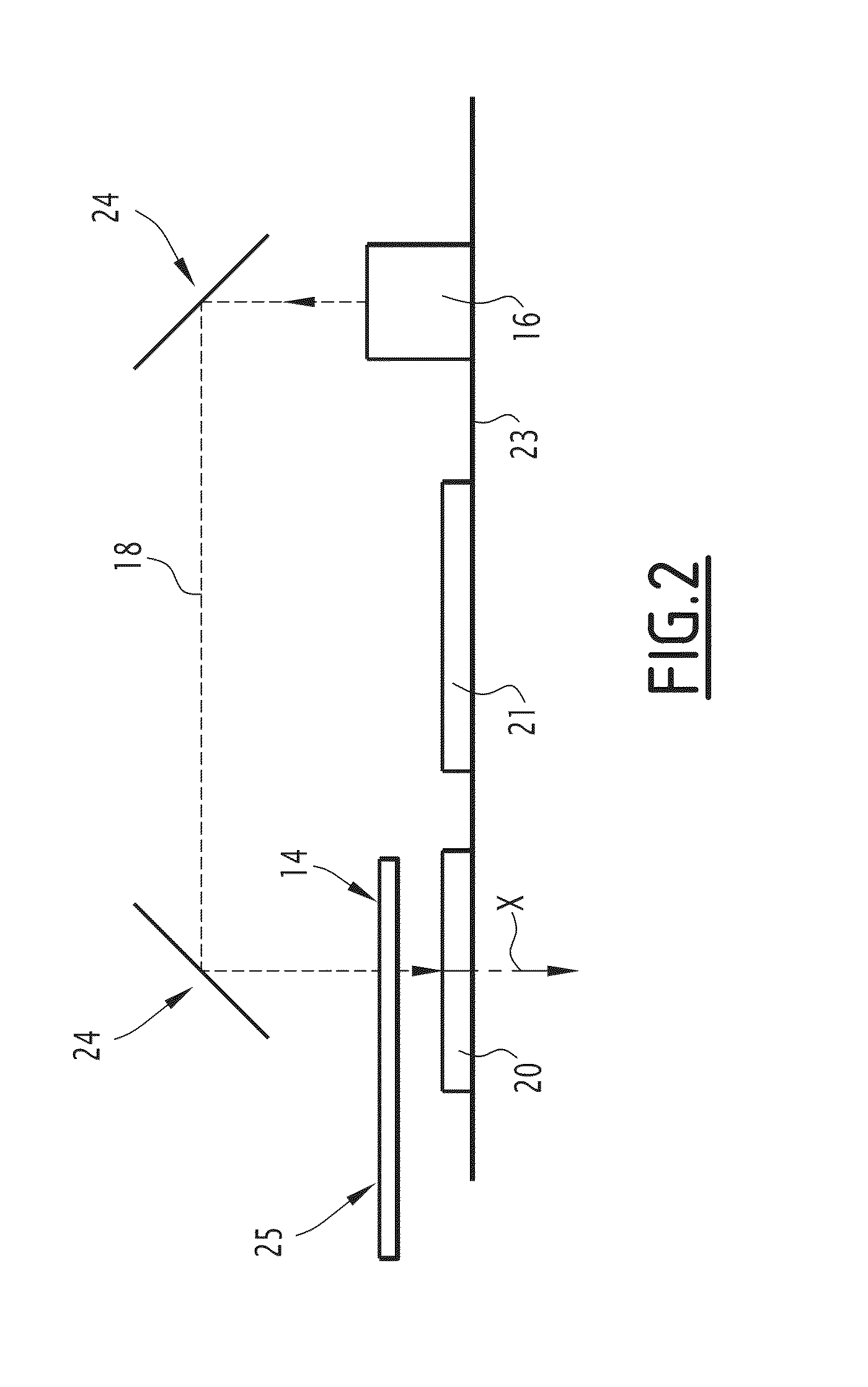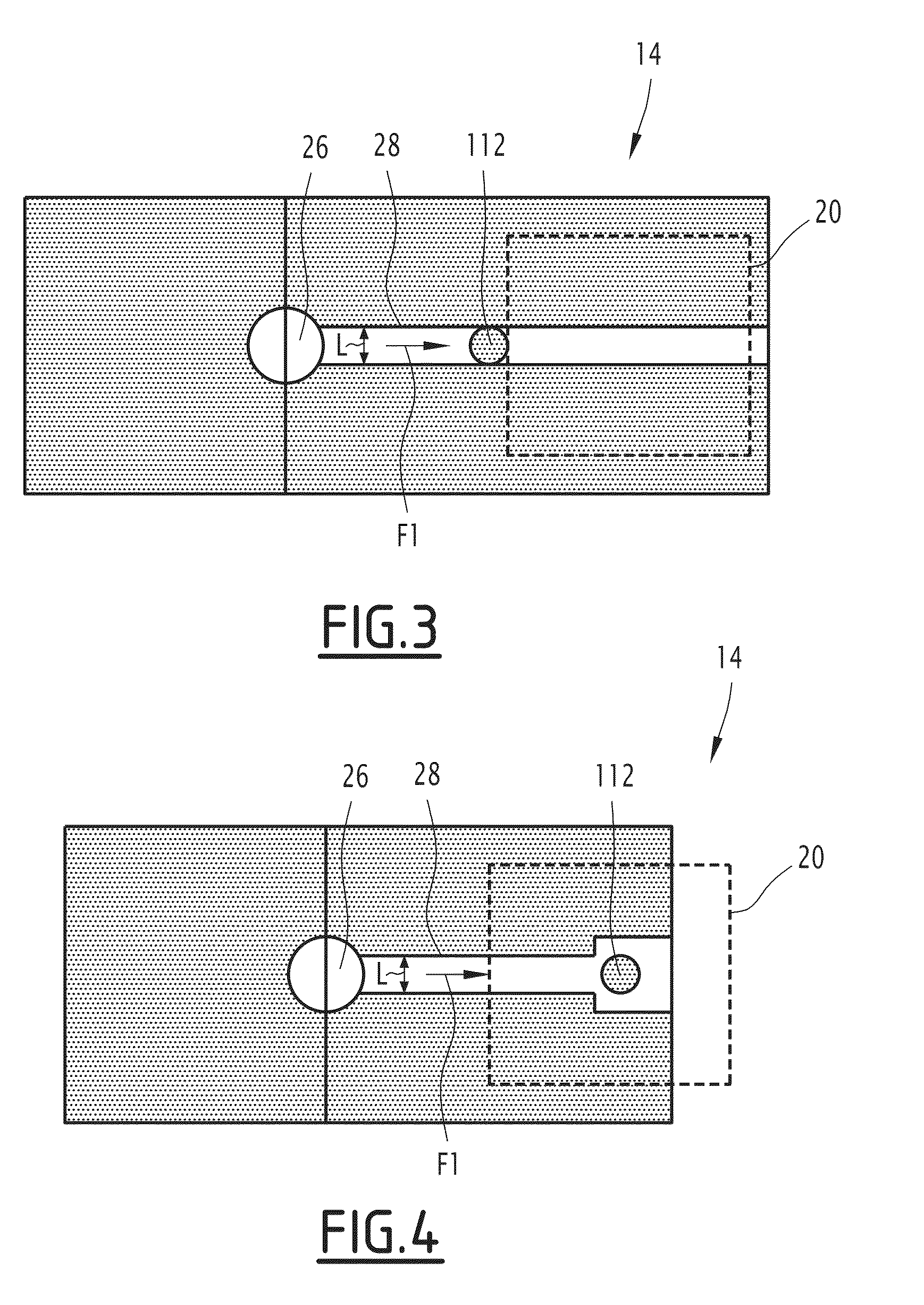Method and system for estimating the quantity of an analyte contained in a liquid
a technology of analyte and liquid, applied in the field of methods and systems for can solve the problems of relatively large system and inability to adapt to estimating the quantity of analyte contained in liquid
- Summary
- Abstract
- Description
- Claims
- Application Information
AI Technical Summary
Benefits of technology
Problems solved by technology
Method used
Image
Examples
second embodiment
[0154] the characterization system 10 is designed more particularly to characterize the agglomeration of particles contained in a liquid 12. The characterization system 10 is for example capable of characterizing the agglomeration of blood particles, such as red blood cells, also called agglutination of blood particles.
[0155]Information relative to the blood group is then also determined from the agglomeration state, also called agglutination state.
[0156]As known per se, the blood group can be determined using the Beth-Vincent test by detecting the presence of A or B antigens implying the absence of anti-A or anti-B antibodies. In the case where the erythrocytes of the tested blood have an A or B antigen, an antigen-antibody complex will be formed and lead to a cellular aggregation as recalled in table 200, shown in FIG. 12.
[0157]The fluid chamber 14 includes two separate circulation channels 202, 204, i.e., a first channel 202 and a second channel 204, as shown in FIG. 13.
[0158]Acc...
first embodiment
[0189]As a complement to the first embodiment, the fluid chamber 14 includes a plurality of channels, for example the two channels 202, 204 visible in FIG. 13, so as to characterize the variation of the speed of the particles of the liquid 12 when the liquid 12 is mixed with different reagents, a respective reagent then being positioned in each channel 202, 204 of the fluid chamber 14. This makes it possible, with a same device, to determine different analysis parameters of the same liquid sample, for example the coagulation time and the blood group.
[0190]Such a fluid chamber 14 is for example advantageous to characterize the coagulation of the liquid 12 containing blood, with different reagents capable of favoring the slowing of the blood particles via a coagulation of the blood, such as the different reagents 112 defined above.
[0191]One can see that the characterization system 10 according to the invention makes it possible to observe a larger part of the fluid chamber 14, while h...
third embodiment
[0299] which corresponds to another independent aspect, the system 10 according to the invention is a system for estimating the quantity of the analyte 304 contained in the liquid 12.
[0300]According to this third embodiment, the system 10 comprises the fluid chamber 14 configured for receiving the liquid 12 and for mixing the liquid 12 with the bifunctional reagent 300, also called bi-specific reagent, the bi-specific reagent 300 being configured for grafting on both the particle 302 and the analyte 304 present in the liquid 12, as shown in FIG. 45.
[0301]The system 10 further comprises the light source 16 configured for emitting the excitation beam 18 to illuminate the fluid chamber 14, the beam 18 propagating through the fluid chamber 14.
[0302]The system 10 further comprises the matrix photodetector 20 configured for acquiring at least one image of a radiation transmitted by the lighted fluid chamber 14 and the information processing unit 21.
[0303]The information processing unit 21...
PUM
 Login to View More
Login to View More Abstract
Description
Claims
Application Information
 Login to View More
Login to View More - R&D
- Intellectual Property
- Life Sciences
- Materials
- Tech Scout
- Unparalleled Data Quality
- Higher Quality Content
- 60% Fewer Hallucinations
Browse by: Latest US Patents, China's latest patents, Technical Efficacy Thesaurus, Application Domain, Technology Topic, Popular Technical Reports.
© 2025 PatSnap. All rights reserved.Legal|Privacy policy|Modern Slavery Act Transparency Statement|Sitemap|About US| Contact US: help@patsnap.com



